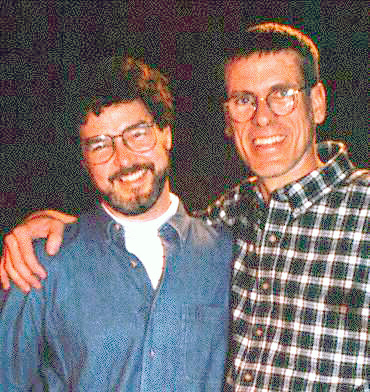When the Intertubes were still in their infancy, before there were blogs and sophisticated news aggregators and RSS feeds, when an online diary was barely a concept, much less thought of as something a person would, for heaven's sake, do, a few intrepid pioneers began keeping track of their diseases online in journal form.
We weren't organized. No one told us to do it. For me, it just seemed like an easy to communicate what was happening with our bodies.
The pharmaceutical companies were also, at that time, beginning to explore how to use the Internet, and one of the first things they discovered, was that they could get ongoing patient feedback on a much wider basis. A feedback operation that you don't have to pay for!
So, they checked out newsgroups and whatever else was available back then. (I'm not a Net historian, so others would have to remember what online life was like in '97, '98). And, somewhere along the line, someone at Merck found my diary page from when I began taking the Crixivan. (Which I'm no longer taking because it does, indeed, have strong side effects, but at the time, it was the miracle we had been waiting for.)
Now, remember, up to this point, AIDS was only barely treatable. The drugs only worked for a little while, if they worked at all, and they were very toxic to the system. Mine had stopped entirely and I was in a death spiral. People with AIDS were dying as if in a war or a holocaust. Each big city newspaper was filled with death notices.
Crixivan changed everything. People stopped dying. Instantly. My doctor at the time said it was like his garden was suddenly blooming. The health turnarounds were so immediate that they fast-tracked the drug onto the market, available in only limited amounts with patients determined by a lottery. I was one of the lucky ones.
Bruce Dorsey is the chemist who was credited with constructing the molecule that is Crixivan.
Drug chemists spend their every waking hour in the lab. They're always in a race against time. Their whole world becomes that laboratory. They never physically interact with patients nor, up to this point in time, could they see the life saving effect that their drug was having on the lives of ordinary people.
Now, along comes the Internet.
Someone at Merck found my page and forwarded it to Bruce. "Hey. There's this guy who's taking Crixivan and writing about it." Here's Bruce quoting from the NY Times article by Sheryl Gay Stolberg:
''Steve was the first person I knew who was actually taking Crixivan,'' said the chemist, Bruce Dorsey. ''As scientists, we just see numbers. It was pretty exciting to see a patient, to see how well he was doing.''
And that's when I got my note from Bruce Dorsey. Which led to my being invited to see the lab.
We had to get special permission, but eventually, Merck let me and I wrote all about it. (Scroll down on that page). A little excerpt:
Notice the reference to Steve Young, which I highlighted. Sustiva had just been created. It's the drug that I switched to after experiencing the toxicity of Crixivan.
Tuesday, February 17, 1998
Where Life Begins.
The building housing the chemical labs at Merck where Dr. Bruce Dorsey works looks like something you'd see in an old 1940's black and white documentary. The rooms are small and cramped. There are wooden cases (like built-in bookcases with glass and wood doors) on either side, one with a beaker and a solution of some kind swirling around in the bottom of it. [They're building a new lab just outside.]
Dr. Bruce is a 35-ish curly haired man with an infectious smile and a great attitude. As soon as I told him I was intensely interested in HIV and how it works, he hauled out the visual aids and gave me a crash course in virology, chemistry and microbiology. I learned that there are three enzymes the virus uses to replicate itself and part of their work is to find ways to interfere with these enzymes.
Amazingly, since my friend Dickie had been also giving me virology lessons in California, I found myself actually able to follow along with the explanation. We tangled with peptides, viral RNA, DNA, reverse transcriptase, protease, integrase, etc.; how the virus binds to the CD4 cell, injecting itself into the cell, turning its own RNA into DNA, then combining with the cell's own DNA and finally turning the host's own immune system into a HIV factory.
I met four of the five main team members who are credited with discovering Crixivan, Merck's protease inhibitor. Joe Vacca, Joel Huff, Kate Halloway and Jim Guare. (Randy Hungate was the other member). I also met Steve Young who has created Sustiva (DMP-266), a new non-nucleoside reverse transcriptase inhibitor (NNRTI).
Dr. Bruce was also quick to credit a man named Dr. Ed Scolnick, who early on was the man who insisted Merck get into AIDS research back when there was real doubt being raised that it would pay off financially. He believed there was a moral obligation for the biomedical research community to fight this disease whether it would make money or not.
And that's your Steve Trivia of the Day.

No comments:
Post a Comment